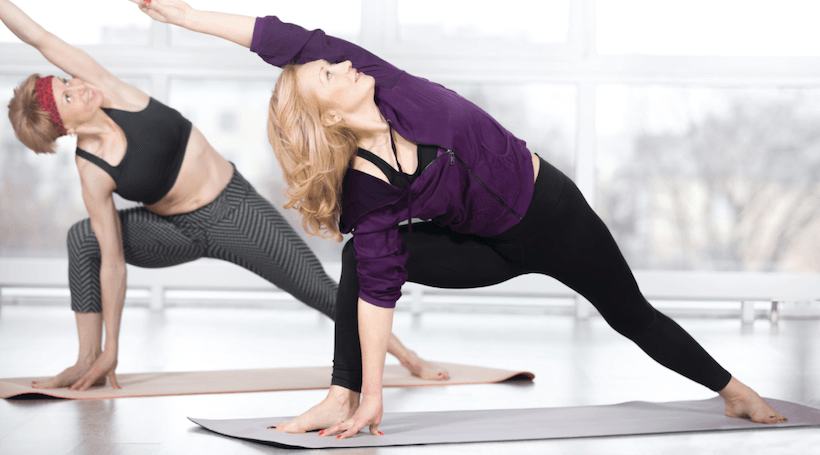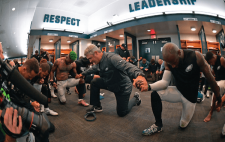Keep your fitness momentum going all year long with tips from SJ orthopedists.
Easy Does It
“When you go back to the gym, you should focus on quality and not quantity,” says Merrick Wetzler, MD, of Advocare South Jersey Orthopedic Associates. “Don’t try to go full-steam. Gradually build up so you’re not overly sore and don’t regret working out.”
Even if using smaller weights or spending less time on the treadmill seems too easy, you don’t need to feel the burn right away. Slowly increasing your intensity can keep you from hurting yourself, explains Wetzler.
“Always underestimate rather than overestimate,” he says. “Start with a weight you’re comfortable with, and do higher reps with less weight – then you can gradually go from that starting point.”
Don’t Skip Your Warm Up
If you’re short on time, it can be tempting to jump right onto the elliptical or start pedaling away on the bike. Not so fast, warns Kathryn Gollotto, DO, of Advocare Orthopedic Reconstruction Specialists.
“Not giving yourself enough time to warm up can lead to muscle injuries or too much stress on the joint. When your muscles aren’t warmed up, they’re not doing a very good job at shock-absorbing,” says Gollotto.
A smart warm-up also gradually increases your heart rate and helps decrease muscle stiffness long after you leave the gym. To get your blood flowing and your body ready to go, Gollotto says you need just 10 minutes. Walking, jumping rope and lunges are all easy ways to loosen up, and once you’re feeling a bit flushed, you’re ready to rock your workout.
“The most important step is to have a slow and steady increase, and listen to your own body,” she says. “If you feel it’s not right, it probably means you’re overdoing it.”
Pay Attention To Pain
We’ve all heard the phrase “no pain, no gain,” but there’s a big difference between a good burn and hurting yourself.
“Soreness is usually a bit more generalized or something you can work through,” says Wetzler. “If you have some soreness in your shoulders or your arms but you’re able to do the exercise and it’s not progressing or getting worse, you can probably work through it. But if your shoulder gets to a point where you can’t lift it anymore because it hurts, that’s the pain you need to listen to.”
Drink Up
“Hydration tends to get neglected,” says Gollotto. “When you’re dehydrated, your muscles aren’t going to function properly, and your joints aren’t as lubricated. You need to watch your fluid intake and drink the minimum of eight glasses of water a day – and more when you’re exercising.”
And it’s not just hydration: lack of sleep, which can lead to poor performance, and a poor diet can lead to injuries too, says Gollotto.
“Nutrition is very important,” she says. “One of the major injuries I treat are stress fractures, and oftentimes, they’re because of inadequate calorie intake. You have to make sure your calories match your demand.”
Embrace Change
Change is a good thing, especially when it comes to working out.
“If you’re doing the same thing day after day, that could be a problem,” says Wetzler. “If you’re working your shoulders every day, you’re going to hurt your shoulders. If you’re running every day, you’re going to hurt your knees.”
Mixing up your routine is also the best way to make sure your body doesn’t hit a plateau and you continue to see results from all the hard work you’re doing at the gym.
“Do different things on different days,” he says, such as alternating between running one day and swimming the next to keep your muscles guessing and working at their peak. “Don’t do the same things back to back.”
Your Core Is Key
You don’t need to aim for a six-pack, but strong abdominal muscles are essential for doing everyday tasks like lifting your toddler and putting away groceries.
“Everything is an extension of your core – without your core, your other muscles can be overworked,” says Gollotto. “It’s often an overlooked area.”
She recommends incorporating core-strengthening exercises – side crunches and planks are easy moves you can do at home – into your routine two or three times a week.
“It can be something as simple as spending 15 minutes on your core,” says Gollotto. “The core also includes your gluteal muscles and your thigh muscles.”
Stick With It
It’s not all that difficult to start working out – the trouble often comes with sticking to it, says Gollotto.
“When you look at studies in the athletic world of what gauges success in an athlete, the No. 1 factor is consistency,” she says. “So it doesn’t do any good to work out for three weeks and then take three weeks off.”
“The average brain takes between 14 to 21 days for something to become routine or a habit,” says Gollotto. “So if you can power through that time – those 14 to 21 days – then it becomes a part of your normal routine. It fits into your schedule, and your brain develops a habit for it.”
Geab A Friend
Joining a yoga studio or spin class isn’t just a great way to meet people who will cheer you on, it also helps give you a push in the right direction, says Gollotto.
“One of the most proven ways to effectively stay with a fitness routine is to do it in a group setting. That is one of the biggest motivators for people to be able to stick with it,” she says. “When it’s a more social environment you’re much more likely to be motivated to go.”














